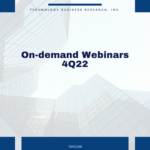EY delivers data-driven transformation through business frameworks and ecosystem partners
Trusted data drives confidence in the process, and EY helps to contextualize it all at scale
With cloud becoming part of the IT utility bill the opportunities for monetizing enterprise data are increasing as the technology provides the bridge between everyday operations and future process optimization with the end goal of improving the customer experience. For all this to happen stakeholders must trust the data they use, which is often a challenge as data quality remains poor. During EY Global Data and AI Summit in November 2022, client stories were centered on the opportunity for organizational data to serve stakeholders — from employees to end customers — but the complexities from a technology and change management perspective continue to slow the pace of adoption.
Overcoming these hurdles requires all parties to work together, but agreeing and then executing on jointly developed frameworks are easier said than done, particularly as technology complexities and various data sources have turned the promise of a data lake to capture insights into a data swamp. This has triggered the need to develop tools and business process flows that extract the noisy data and capitalize on the insights first- and third-party data offer. EY’s background in business process optimization and investments in tech-ready solutions turn the firm into an invaluable partner especially as EY sees data and AI as a strategic growth initiative.
According to TBR’s November 2022 Digital Transformation: Voice of the Customer Research, “While we do not anticipate AI and/or automation tools to take over the top spot for technologies that support buyers’ DT [digital transformation] programs, these technologies will be further put to the test in 2023 as enterprise buyers seek to drive efficiencies by using automation and generating targeted insights through AI algorithms to withstand macroeconomic headwinds.” Smart IT services vendors and consultancies will come forward and offer this exact value proposition, forcing EY to ensure it can deliver measurable ROI. Technology alliance partners see the opportunity to develop an open tech stack, such as Databricks, which presented at the conference about its tiered warehousing solution Lakehouse.
This would allow consultancies like EY to scale adoption and integration, thus alleviating buyers’ concerns about vendor lock-in. EY brings capacity and capability to enable the use of enterprise data through the value chain, leading with process and content knowledge, which helps it strengthen trust with stakeholders seeking a vendor to contextualize their business data. TBR recognizes that standardizing data is an ongoing endeavor and the need to develop interoperable data standards is not a new concept. EY’s openness to lead the discussion and the efforts around the issue provide a starting point, a necessary first step for all parties to benefit from the value of data.
It is all about the ecosystem and EY is taking steps to address the opportunity
Vendors often recognize a trend or a need to address opportunities and/or threats through a particular adjustment of their go-to-market strategy and/or portfolio offerings, but they rarely make bold moves that could disrupt operations. This time it is different. At the summit EY demonstrated its willingness and readiness to partner better and differently. During one of the panel discussions, EY brought six of its data and AI partner companies ranging in size and portfolio offerings to present on stage: Databricks, IBM, Microsoft, RelationalAI, Snowflake and UiPath.
The companies presented in alphabetical order so EY could avoid being accused of favoritism, a smart move further confirming EY’s willingness to partner better and bring parties together not just in a press release but also to clients. EY’s approach to partners is different from many of its peers’ as the firm does not go to market with a particular vendor unless EY uses that vendor internally. Adopting a customer zero approach to its alliance partners elevates EY’s trustworthiness, a key element in the firm’s efforts to act as an ecosystem enabler.
According to TBR’s November 2022 Digital Transformation: Voice of the Customer Research: “With trust comes responsibilities, and vendors that align their portfolios, partners and people with client expectations, rather than trying to constantly upsell and cross-sell new technology, are better positioned to maintain that trust. Managing partner ecosystems is becoming increasingly important as they help vendors develop capabilities that add depth around industry knowledge and/or technology expertise — something buyers appreciate. Overcoming competitive pressures by pivoting toward coopetive frameworks takes time, alignment with leadership’s vison, and the establishment of new commercial and incentive models. Accounting for technology complexity, along with operational silos and data exchange, is also key to these efforts.”
With EY writing many of the rules in the alliance partner management playbook, the firm has set the bar high, not just as a showcase at a conference but also as a go-to-market approach as the firm continues to execute on a vision rooted in adopting collaborative business models enabled by standardizing data.
EY and its technology partners deliver data-driven transformations for clients
EY invited numerous client representatives from EMEA, North America and APAC to share their stories about working with EY and its partner companies. For example, EY, in partnership with UiPath, worked with a Fortune 500 automotive retailer in North America to enable its automation journey, build a foundation for an analytics model, and establish an internal Center of Process Excellence to address the client’s top strategic priorities. EY helped the client develop a proof of value and a business case for the automation of specific processes, build an operating model enabled by data analytics and robotic process automation, and implement UiPath’s low-code and no-code drag-and-drop solutions. EY leveraged its technology expertise to educate the client around technology solutions and supported process improvement initiatives.
The key takeaway from this client case is that EY stood out for its ability to build trust in relationships and to drive process improvement and transformation, especially when automation involves changes in people’s job structures. EY helped the client understand the next-generation technology and how to establish a lean corporate structure and have a streamlined IT organization, and gave client teams the ability to do things themselves with low-code and no-code solutions while providing structure and guidance along the journey.
EY also showcased its decision intelligence engagement with HSBC and in partnership with Quantexa, a provider of decision intelligence software. As the banking industry undergoes digital transformation, having a data analytics capability is essential. During the discussion, EY and the client shared that when starting a digital transformation initiative, it is very important to understand the scale of the organization and noted that it is hard to have a digital model without data and data connectivity. Obtaining the right level of information during the decision-making process, all based on models and data, is the first step in the transformation process.
Prior to initiating the transformation, EY conveyed voice of the customer and voice of the employee studies to be able to drive a cultural change and adoption of digital processes at the bank. During the three-year engagement, which began in 2021, EY supported the client during the adoption of the model, which was driven by metrics such as revenue growth, and implemented a data platform that underpins clients’ operational processes. EY’s understanding of the clients’ business and key performance metrics, and delivery of thought leadership on the financial services industry, enabled the client to expand activities with its customers and pursue opportunities in new areas, such as establishing a digital marketplace.
Future transformations require data-enabled foundations today, and EY offers reliable frameworks for clients and partner companies
EY’s future-back approach to innovation aligns better to technology adoption than it does to execution against the increasingly anachronistic enterprise-first mentality. Applying its future-back framework to data and AI opportunities positions EY as an ecosystem orchestrator that can help guide, develop and manage enterprise motions regardless of where transformation programs originate: bottom up or top down. In the bottom-up scenario, building organizational muscle, such as establishing a Center of Excellence through building use cases and an AI North Star to scaling often stalls because of internal politics, which, on the other hand, create change management opportunities for EY. The top-down motion, typically C-Suite led, takes a bolder approach, which a firm like EY can support through its robust background in financial analysis, governance and risk management. While neither scenario is unique to data and AI, the market is ripe for transformation, but only if a firm like EY manages to extend its support beyond the front-end advisory recommendations.
In TBR’s special report EY Managed Services protect clients from the bleeding edge of regulatory change we wrote: “EY said little about infrastructure technology, and yet the value propositions discussed throughout the day repeatedly referenced EY Fabric. A cloud-based data lake infused with AI and machine learning, the critical distinction of EY Fabric is that it is one global operating model. A single global operating model requires a standard set of business rules and inordinate amounts of data wrangling before any analytics can be applied against the data for business insights.
For years technology vendor events have brought forth clients to share their operating horror stories of trying to get right the standard data model. That EY, a global partnership, was able to settle on one global data model internally, and then drive it out to market is a testament to the EY operating culture, and a boon to its managed services practice. EY Fabric automates data wrangling for EY clients. It then extracts data from client systems, normalizes the data in EY’s data lake and runs proprietary algorithms against the data. Finally, EY Fabric reports fact-based insights and change management recommendations to the client. From those advisory engagements flows the managed services agreements, where EY ‘lands’ by addressing the topmost set of operational pain points, and then ‘expands’ through that proof of value into adjacent service modules.”
While EY Fabric provides the necessary link to managed services, the platform also connects well with partner technologies. For example, SAP represents the application layer, which contains much of the EY client that must be extracted and run against EY algorithms for business insights. Microsoft underpins the cloud-first EY Fabric and coinnovates with EY on the hooks into customer data. ServiceNow (NYSE: NOW) provides the base workflow shell for many of the EY managed services workflows. These relationships further amplify EY’s end-to-end enterprise transformation value proposition. We believe EY is self-aware of its strengths as the firm continues to collaborate with partners, including technology and services companies, to ensure it maintains service quality and protects its brand.
Our most-read analysis, free in your inbox each week — Subscribe today!
EY’s humility paves the way for long-term success in a tough marketplace
We understand that becoming ecosystem orchestrators in the data and AI space or in the technology market takes time and, most importantly, talent; it is important to build a bench with orchestrators that consist of project heads with the necessary domain expertise to curate client processes for ingestion into EY Fabric as well as orchestrator AI chatbots to be run against the increasing volume of regulatory changes flowing from the public sector as governments seek to keep up with the pace of business change technology unleashes.
EY is not immune to talent retention headwinds, but the firm continues to invest in various initiatives to expand its recruitment reach. For example, EY’s Open Data Science Challenge gives the firm access to university students across the globe who sign up to participate. EY gains a database of potential recruits who bring AI knowledge and business interest, which the firm could later explore, especially those who move further in the competition. During the conference, EY announced the winner of this year’s challenge, which was focused on developing an AI algorithm addressing biodiversity and predicting the movement of frogs in nature. EY sees these recruitment opportunities as another node of its already humble approach to build an ecosystem where each participant plays a role rather than constantly competing with each other.
In TBR’s December 2022 Cloud Ecosystem Market Landscape we wrote: “To be leading ecosystem participants, vendors across the ICT value chain will be required to prioritize the needs of both their partners and enterprise buyers over their internal growth aspirations. It sounds like an idea born in marketing, but DT outcomes will demand multiparty business networks, which bring together the value propositions of players across the technology value chain. By leading with their core competencies, players can establish the needed trust of partners and customers alike, increasing their competitiveness against other players that have spread themselves too thin with aspirations of being end-to-end DT providers.”
Executing against the commercial construct of multiparty ecosystem technology and delivery model starts with aligning leadership vision to sales motions and incentive models that are centered on superior customer service rather than fulfilling quarterly sales quotas. With EY pursuing plans to split its consulting and audit business and the NewCo seeking to become a publicly traded company through an IPO, preserving the firm’s humility and entrepreneurial culture will likely present an even greater challenge than developing tools and algorithms that can clean enterprise data swamps and turn them into valuable customer insights that provide the necessary links to support end-to-end enterprise transformation.
Since TBR attended the summit, EY has announced the global chair and CEO for the two proposed organizations post-split (AssureCo and NewCo). Julie Boland will serve as the global chair and CEO of AssureCo, and Carmine Di Sibio will serve as the global chair and CEO of NewCo. AssureCo will focus primarily on audit, tax and specialized advisory services. NewCo’s capabilities will be geared toward offering consulting-led IT services and solutions. TBR will closely monitor the progress of the split and will reflect our takeaways in special reports as well as future iterations of the Management Consulting Benchmark Profile: EY. TBR will share additional analysis and financials of EY’s data and AI business as part of the January 2023 Digital Transformation: Analytics Professional Services Benchmark.
In November TBR had an opportunity to attend, in person, EY’s first Global Data and AI Summit held in Malaga, Spain. EY did not randomly choose the location, and it gave the firm an opportunity to highlight its entrepreneurial culture, something that came through vividly throughout the conference as TBR interacted with some of the more than 100 attendees including EY clients, partner companies and other analysts. In recent years Malaga has become the IT nomad’s paradise as its warm climate and lower cost of living have attracted many IT professionals, turning the town into a leading IT industry destination in Europe. EY also recently opened a Global Delivery Center in the city. Entrepreneurship often means innovation and understanding that success is rooted in collaboration, which is highlighted by EY’s recent activities as the firm aims to capitalize on end-to-end enterprise transformation opportunities.


 Technology Business Research, Inc.
Technology Business Research, Inc. Technology Business Research, Inc.
Technology Business Research, Inc.